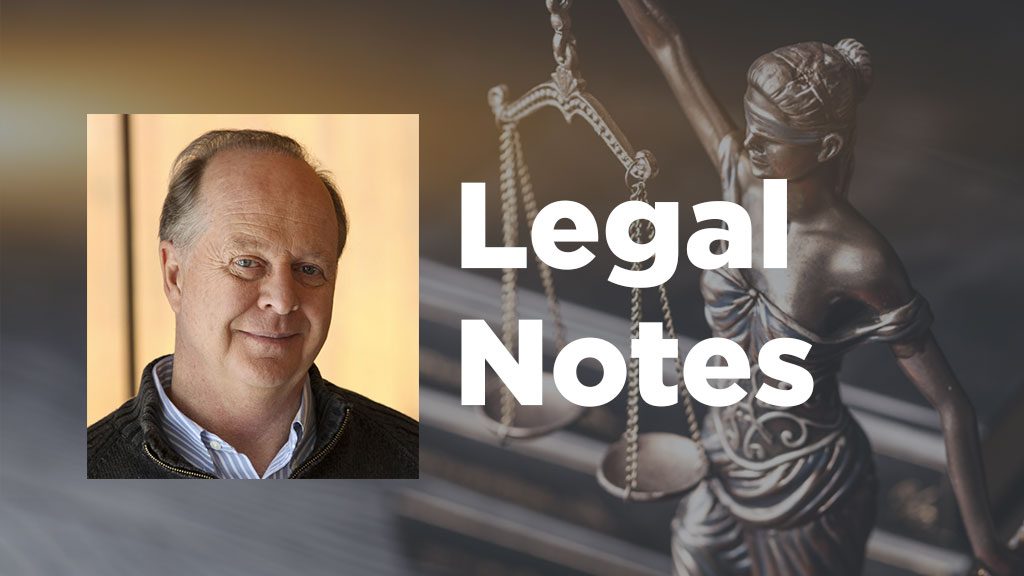Attorney Steven Schwartz experienced first-hand the legal profession’s latest technology nightmare. Schwartz was forced to admit to a Manhattan federal court judge that several precedents cited in his lawsuit were, in fact, “hallucinations” created by ChatGPT.
For verification, he had simply gone back to the Large Language Model (LLM) itself.
“I did not comprehend that ChatGPT could fabricate cases,” Schwartz said.
Fear of inaccurate and falsified legal information haunts the profession. That’s why it’s interesting to learn of an AI-assisted legal platform that recognizes it limits.
Document Crunch is a subscription-based service commercially launched in 2020 by Josh Levy, a former construction lawyer with 10 years’ experience both in private practise and in-house counsel.
Rather than an open-ended LLM approach that could generate possible “hallucinations,” Document Crunch has created proprietary AI models based on curated, construction-specific contract language.
It focuses on doing one thing well: reviewing construction contracts and identifying critical issues.
The Daily Commercial News interviewed Levy from his office in Atlanta, Ga.
How would you describe the mission of Document Crunch?
There are so many activities that construction companies go through, whether they have in-house counsel or not, that never reach the lawyer’s desk. Contracts have been highly subjective in the past. We want to ensure people have access to information so that they can begin to formulate their own thoughts and opinions, and then engage with legal resources when needed.
Is Document Crunch designed for law firms or the construction industry itself?
The platform has really been designed for the non-legal end-user in mind. Those getting the biggest bang for their buck will be construction’s middle-market. The usual profile is a trade contractor or a general contractor somewhere between $100 and $150 million in revenue, maybe going up to the $1 billion level. They might have anywhere from zero to two lawyers in-house.
How does Document Crunch work? Do users ask it questions?
Document Crunch does not have any such interface. You put the contract document up and Document Crunch identifies the important issues, and then provides rationale of those issues. It doesn’t tell you what is good or bad, or whether you should sign or not. It simply leaves the end-user empowered with the benefit of understanding the issues needed to make a good decision.
So Document Crunch provides a form of highlighted notes?
That’s exactly right. It’s not an open interface where you just “chat.”
What’s the problem with “chatting?”
Large Language Models are awesome and have huge power, but you are swimming at your own peril when you get into a super-flexible situation. I don’t think the accuracy in the open-ended format is up to the standard we have established with Document Crunch. We hope to provide a safer experience. We are curating the technology on top of the very models and issues that we have already identified. In that instance, I believe it is highly accurate.
Are lawyers concerned you are taking work away from them?
We’ve had a very warm reception from the in-house contingency. What we have heard from outside lawyers is that Document Crunch has made their work a little more collaborative. Rather than clients just tossing something over the fence and saying, “Hey, can you handle this?” it’s more like, “Hey, I actually understand some of this, and can we discuss all of it.”
Can you give an example?
So many contractors can be put in the position where, if they don’t accept a certain contract term, the other party says, “I’ll just go to the next guy.” Imagine if you had the power and opportunity to say, “I know that only 16 per cent of my peers have accepted a term like this in this market.”
Or, “My surety carrier is telling me that this issue is at the core of most claims and I would get a premium or deductible reduction if I negotiated into a more favourable place.”
Armed with that sort of data, you could start making better decisions. You would have a heightened awareness of what the real issues are and have the data to support it.
In essence, we’re helping to facilitate collaboration with a bit more certitude then if you were left to your own devices.
John Bleasby is a Coldwater, Ont.-based freelance writer. Send comments and Legal Notes column ideas to editor@dailycommercialnews.com.
For more on Document Crunch, listen to The Construction Record podcast here.
The Construction Record Podcast – Episode 273: Document Crunch CEO Josh Levy









Recent Comments